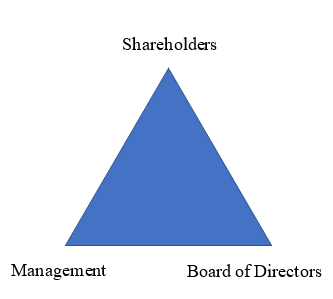COVID-19 has generated significant uncertainty and high inconsistency in the capital markets in almost all the countries and the impact it caused thus far is yet to be determined. As with the spread of the virus, adverse impacts are likely to continue. Political leaders around the world consider COVID-19 is the biggest challenge they confront since World War II (Allam, 2020). To mitigate the impact, governments and central banks responded to the economic crisis with both fiscal and monetary tools in remarkably high degrees (Benmelech and Tzur-Ilan, 2020). Though containment initiatives like quarantine and social distancing methods practice to control the outburst of COVID-19, IMF forecasts global growth failure and the worst economic downturn since the great depression in 1930s (Amir, 2020).
As a developing country, Sri Lanka’s finance industry has been most affected by the crisis, with the breakdown of financial market stability since February 2020. Leaders of the financial institutions of the country have a greater responsibility to stabilize the economy by lowering the delinquency level and introducing a proper money circulation process as Sri Lanka has been re-marked as a lower-middle-income country (Worldbank, 2020) otherwise negative impact caused due to the closure of airports, reduction in imports cannot be reinstated for decades. Therefore, this blog assesses potential roles of leaders and strategies they should follow in post COVID-19 crisis management in finance sector of Sri Lanka through corporate governance practices.
Corporate Governance in brief
Corporate governance describes the processes, laws, policies and institutions that manages organizations and corporations in the way they direct and administer their operations while working to achieve organizational objectives and manages the connection between stakeholders including the shareholders, managers and the board of directors (Khan, 2011). Tripod of corporate governance shown below.

The value of corporate governance comes to light in modern corporations as a result of the separation of ownership and control in organizations (Alsharqawi and Alsharqawi, 2019) that occurs the agency problem, the conflict of interest between the managers/directors and dispersed shareholders (Maher and Andersson, 1999).
Main components of corporate governance and its importance
Accountability, ethics and transparency are main components of ethical governance and they create part of corporate governance model along with the values such as fairness, commitment, integrity, leadership, confidence, competency and respect (Gebba and Aboelmaged, 2016, Ogunyemi and Laguda, 2016).
Taking into the account of the importance of values in good governance, negligence of corporate governance in organizations usually leads to substandard financial performance which eventually cause damage to brand, reputation and financial of the company (Rubino and Vitolla, 2014). Therefore, a reliable corporate governance model shrinks unethical behaviour such as fabrication of financial information and protect shareholders from deceiving (Ng et al., 2015).
Chicago’s Board Options Exchange Volatility index which is an indicator of risk and uncertainty has rose to its highest level ever recorded in March 2020 due to the prevailing pandemic situation. Risk management gained attention in corporate governance and ethical governance influences effective risk management (Soltani, 2013, ElGammal et al., 2018, Peters and Romi, 2013), meaning, and risk management is believable to be more worthwhile in corporate governance framework.
Moreover, risk management process includes, identification of risks, setting up internal controls for risks beyond risk appetite, assessing residual risks, analysing effectiveness of internal controls etc. Corporate governance practices always keen on directors to review the effectiveness of internal controls and proper governance framework to manage risks.
The status of corporate governance of finance sector in Sri Lanka
Although implementation of corporate governance practices is voluntary and some rules are included in the listing rules of Colombo Stock Exchange and some practices are specially mandated by the governance rules imposed by statutory and regulatory acts (Heenetigala, 2011). To comply with section 3(6) f Direction 11 of 2007 issued by the monetary board of Sri Lanka, risk management committee shall be formed by banks and financial institutes of Sri Lanka (Dharmadasa et al., 2014).
The risk committee assists the board of directors by reviewing major risk exposures and steps to monitor and control and determining the effectiveness of implemented measures. The Key Risk Indicators (KRIs) are usually used for assessing and monitoring risks regularly. In terms of financial sector, risks are mainly categorised as credit, market, liquidity, information technology, operation, strategic etc.
Furthermore, risk committee sets statutory, regulatory and fiduciary responsibilities relate to risk management. As a proactive approach, many risk committees also discuss macro-economic factors in global level (Al-Hadi et al., 2015). However, it is rare to see a systematic approach such as through analysis of principal risks, setting up inter-connectivity between principal risks to the viability of the company as stress tests (Heenetigala, 2011).
Finally, board shall delegate the authority to audit committee to assess the risk management process ensuring financial assurance (Bedard and Johnstone, 2004). Some institutes have considered the business continuity as well as the disaster recovery plan with their risk committees to be in line with the statuary requirement. However, directors as the leaders of an institute shall follow rigid risk analysis in sake of the future of the company.
Suggestions to enhance stability of Sri Lanka’s finance industry through corporate governance practices in post COVID-19 era
COVID-19 has reminded of the importance of corporate governance while leadership aiding institutes to succeed in competitive advantage and unchanged in long-run. The board of directors shall understand the importance of ensuring long term competitiveness when addressing social crisis. Nowadays, shareholders expectation of focusing on risks and opportunities has enlarged to a maximum sustainable value creation. Hence, all aspects need to be integrated for an integrated corporate governance relating to below four areas.
01) Long term value creation through aligning strategy and correct capital allocation
Leaders must change strategies and welcome advanced and disruptive innovations of digitalization, adaption to new economies, workplace changes, constraints in social and ecological life etc (Trapp, 2020). As an example, during a lock-down amidst pandemic situation, annual general meetings (AGMs) can be held virtually where electronic voting can be arranged. Also, directors shall ensure correct capital allocation priorities with returns to shareholders.
02) Rigid awareness in associated risks and act wisely
Directors shall identify associated risks in depth where environmental, social, economic factors are rapidly changing. It is vital to look for other innovations, investments and technologies to be used for current risks as well as for predicted future risks (Bedard and Johnstone, 2004). Good governance provides assurance on ethics, compliance, anti-corruption as well as provides key data stewardship in area of assurance from cybersecurity, governance of artificial intelligence and machine learning etc (Goldman and Filliben, 2001).
03) Prior preparedness to a crisis
Leaders shall be able to oversee systemic crises rising either, financial, or ecological or social etc. The ability to oversee and proactive approach is vital to respond and recover easily. Board shall aid the directors in critical functions, operational aspects with their oversight on risks, looking on health of employees etc (Aguilera, 2005).
04) Cooperation for strengthening the work environment
It is the responsibility of the board to align the workforce be prepared for any alignments in future. This also includes righteous payment of taxes and ensuring social justice.
Directors are not exempted from the change caused by the pandemic. They are spending more time on board responsibilities and when board meetings are being virtual, owners have their same level of questioning and challenging the management. The above measures will enable the leaders share the responsibility for a profound social, economic and environmental system to operate with a more integrated corporate governance approach. In post COVID-19 era, boards will be required to work with directors to ensure risk management and company’s strategic planning in order to recover from the crisis (RajibShaw et al., 2020).
At TED talk, Sinek (2014) presented a phenomenal speech by highlighting that leadership is not just a rank, it is a choice. He also emphasised, “we call them leaders because they go first. We call them leaders because they take the risk before anybody else does, we call them leaders because they will choose to sacrifice so that their people may be safe and protected” (Sinek, 2014). This pandemic has made the leader’s job more stressful, demanding and devoting more time and effort on crisis management. A top down approach to identify principal risks and bottom to top approach for operational risk identification is vital.
I’d love to hear what you think about this post, The Role of Organizational Leaders in Post COVID-19 Crisis Management Through Corporate Governance Practices in Finance Industry of Sri Lanka. Let me know in the comments or contact via the form.
Reference
AGUILERA, R. V. 2005. Corporate Governance and Director Accountability: an Institutional Comparative Perspective. British Journal of Management, 16, 39–53.
AL-HADI, A., HASAN, M. M. & HABIB, A. 2015. Risk Committee, Firm Life Cycle, and Market Risk Disclosures. Corporate Governance An International Review, 24, 1-26.
ALLAM, Z. 2020. Oil, Health Equipment, and Trade: Revisiting Political Economy and International Relations During the COVID-19 Pandemic. Elsevier Public Health Emergency Collection, 119–127.
ALSHARQAWI, A. & ALSHARQAWI, A. A. 2019. Separation of Ownership and Control in Corporate Governance. Journal of Law, Policy and Globalization, 84.
AMIR, M. K. B. 2020. COVID-19 Pandemic: A Snapshot of Global Economic Repercussions and Possible Retaliations. University of Dhaka.
BEDARD, J. C. & JOHNSTONE, K. M. 2004. Earnings Manipulation Risk, Corporate Governance Risk, and Auditors’ Planning and Pricing Decisions. The Accounting Review, 79, 277-304.
BENMELECH, E. & TZUR-ILAN, N. 2020. The Determinants of Fiscal and Monetary Policies During the Covid-19 Crisis. National Bureau of Economic Research: Northwestern University.
DHARMADASA, P., GAMAGE, P. & HERATH, S. 2014. Corporate Governance, Board Characteristics and Firm Performance:Evidence from Sri Lanka. Journal of South Asian Development, 21, 7-31.
ELGAMMAL, W., EL-KASSAR, A.-N. & MESSARRA, L. C. 2018. Corporate ethics, governance and social responsibility in MENA countries. Management Decision, 56, 273-291.
GEBBA, T. R. & ABOELMAGED, M. G. 2016. Corporate Governance of UAE Financial Institutions: A Comparative Study between Conventional and Islamic Banks. Journal of Applied Finance & Banking, 6, 1-7.
GOLDMAN, M. D. & FILLIBEN, E. M. 2001. Corporate Governance: Current Trends and Likely Developments for the Twenty-First Century. 25, 683-713.
HEENETIGALA, K. 2011. Corporate Governance Practices and Firm Performance of Listed Companies in Sri Lanka. Doctor of Business Administration, Victoria University.
KHAN, H. 2011. A Literature Review of Corporate Governance. International Conference on E-business, Management and Economics. Singapore: IACSIT Press.
MAHER, M. & ANDERSSON, T. 1999. Corporate governance: Effects on firm performance and Economic growth. Available: https://www.oecd.org/sti/ind/2090569.pdf [Accessed 9th October 2019].
NG, P., LO, M. & CHOY, E. 2015. Improving China’s Corporate Governance within the Big Data Era – Integration of Knowledge Management and Data Governance. Proceedings of the International Conference on Intellectual Capital. Academic Conferences and Publishing International Limited.
OGUNYEMI, K. & LAGUDA, E. 2016. Ethics, workforce practices and sustainability by multinationals in Nigeria. Worldwide Hospitality and Tourism Themes, 8, 158-181.
PETERS, G. F. & ROMI, A. M. 2013. Does the Voluntary Adoption of Corporate Governance Mechanisms Improve Environmental Risk Disclosures? Evidence from Greenhouse Gas Emission Accounting. Journal of Business Ethics, 125, 637–666.
RAJIBSHAW, YONG-KYUNKIM & JINLINGHUA 2020. Governance, technology and citizen behavior in pandemic: Lessons from COVID-19 in East Asia. Progress in Disaster Science, 6, 1-11.
RUBINO, M. & VITOLLA, F. 2014. Corporate governance and the information system: how a framework for IT governance supports ERM. Corporate Governance, 14, 320-338.
Why good leaders make you feel safe, 2014. Directed by SINEK, S.: TED Conferences, LLC.
SOLTANI, B. 2013. The Anatomy of Corporate Fraud: A Comparative Analysis of High Profile American and European Corporate Scandals. Journal of Business Ethics, 120.
TRAPP, R. 2020. Regenerative Leaders Can Show The Way Out Of The Crisis. Forbes. Forbes Media LLC.: Forbes Media LLC.
WORLDBANK. 2020. The World Bank In Sri Lanka [Online]. The World Bank Group: worldbank.org. Available: https://www.worldbank.org/en/country/srilanka/overview#1 [Accessed 9th October 2020].
